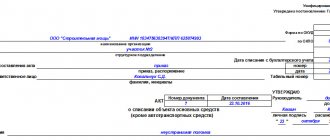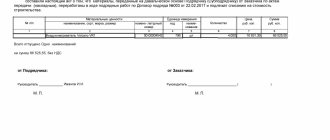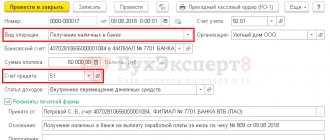Repayment of funds provided under a loan agreement, credit agreement or other financial agreements can be ensured by various mechanisms.
If your company has received the bank’s consent to issue a loan, the procedure for signing an agreement on direct debit of funds may precede the issuance of money. What is direct debit and what subtleties of this procedure you should know, we will talk in this article.
Direct write-off
The essence of non-acceptance
In order to make monthly loan repayments, the company must sign an agreement. Thus, the write-off is carried out by the bank itself in favor of repaying the principal debt. These are the so-called conditions precedent, according to which one party (the borrower) acknowledges the payment request of the Lender.
Acceptance is recognition of the bank's claim and the transfer of authority to the Lender to write off a certain amount from the account. It is according to such a document that the bank has the opportunity to withdraw money.
However, there is an exception to any rule and direct write-off indicates that in some cases the Lender can write off funds without the consent of the borrower.
acceptance
In order to understand the essence of the procedure and its legal aspects, let's find out what the main task is facing the acceptance agreement.
This is a guaranteed opportunity for the lender to make a monthly write-off, regardless of whether he currently has money in the asset or not. By signing a non-acceptance agreement, the Lender minimizes the financial risk. In addition, this is an additional incentive for the debtor to fulfill his obligations on time and in full.
! Acceptance is the acceptance by one of the parties of an offer that guarantees payment from the company's accounts.
The main objective of such a document is to guarantee one of the parties that within a certain period of time he will make payment for the service provided.
In business practice, this document is regarded as a guarantor of fulfillment of obligations.
A reasonable question may arise here: why complicate the procedure for signing an agreement so much, if the very conclusion of an agreement already constitutes acceptance of all its terms? The fact is that the parties do not always have the opportunity to meet in person to sign papers.
acceptance precedes the conclusion of a transaction
If the parties are geographically located at a great distance from each other, then the conclusion of the transaction is preceded by the acceptance procedure - acceptance of the terms of the payment order. This is a kind of formalization of the transaction.
In banking, acceptance is generally used for international transactions. Such a financial payment requirement guarantees one of the parties that payment will be made in full exactly on the specified date.
The payment request must be fulfilled within three days after it is issued. And if one party does not want to pay the bills, they must provide a reason explaining this decision.
If the party agrees to fulfill the obligation and pay the payment order, then he puts a signature on the document in the “Accepted” column.
Settlements by payment orders
The payment order is issued by the payer of the funds. Create this document on form No. 0401060 (Appendix 2 to Bank of Russia Regulations dated June 19, 2012 No. 383-P).
The description of the fields and the procedure for filling out the payment order is given in Appendix 1 to the Regulation of the Bank of Russia dated June 19, 2012 No. 383-P.
For more information on how to correctly fill out the fields of a payment order when transferring payments to the budget, see:
- How can an organization transfer taxes to the budget without errors?
- Rules for filling out payment orders for the payment of taxes and contributions;
- Filling out individual fields (columns) of the payment order (application for cash expenses) when paying the state duty.
When accepting a payment order for execution, the bank checks:
- reliability of the electronic signature (when receiving a document in electronic form);
- correspondence of signatures and seal impressions to the card with their samples (when receiving a document on paper);
- no changes to the document;
- compliance with the established form and procedure for filling out details;
- sufficient funds in the current account to make the payment.
This procedure follows from paragraphs 2.1–2.10 of Bank of Russia Regulation No. 383-P dated June 19, 2012.
If the payment order is correctly executed and there are sufficient funds in the current account for electronic payments, the bank accepts it for execution and notifies the organization about it. If the payment order is drawn up on paper, then if the verification result is positive, the bank employee affixes the acceptance date, stamp and signature. A copy with the bank's marks is returned to the organization no later than the next business day.
If a payment order is executed incorrectly electronically, the bank must notify the organization electronically of the cancellation of the payment, indicating the reason. If the payment order is drawn up on paper, then it is returned with a mark on the date and reason for the return and certified with a stamp and signature of a bank employee.
This is stated in paragraph 2.13 of the Bank of Russia Regulations dated June 19, 2012 No. 383-P.
If there are insufficient funds in the bank account, payment orders are not accepted by the bank for execution and are returned (cancelled) no later than the next business day, with the exception of payments:
- to the budgets of the budgetary system of Russia and state extra-budgetary funds, as well as payments of the same and previous priority for writing off funds (clause 2 of Article 855 of the Civil Code of the Russian Federation);
- at the request of fund collectors;
- in accordance with the agreement with the bank.
Such settlement documents are placed by the bank in the queue of orders not executed on time and are executed by it on time and in the order in which funds are written off (clause 2 of Article 855 of the Civil Code of the Russian Federation).
The bank may process payments partially. For this, a payment order is used in the form 0401066. In case of partial payment, the bank employee will write o. on the front side in the upper right corner. On the reverse side of the payment order or in an attachment drawn up in any form, the following is indicated:
- serial number of partial payment;
- payment order number and date;
- partial payment amount;
- balance amount;
- signature.
This procedure is established by clauses 2.10 and 4.4 of the Bank of Russia Regulations dated June 19, 2012 No. 383-P.
The procedure for receiving, processing, protecting and confirming electronic payment documents is established in the bank account agreement (clause 1.5.10 of Section I of Part III of the Rules established by Bank of Russia Regulation No. 385-P dated July 16, 2012). A payment order in electronic form must contain fields, the list and dimensions of which are given in Appendices 1 and 11 to Bank of Russia Regulation No. 383-P dated June 19, 2012.
A payment order must also be issued in the case of transferring funds from an organization’s current account opened in one bank to its own current account opened in another bank. In essence, this operation is no different from the operation of transferring money to another organization, for example, for purchased goods (work, services). After all, a transfer (transfer) is an operation of debiting funds from one current account and crediting them to another, and the general rules for processing a payment order must apply to such an operation. So, indicate yourself as the recipient of the funds. That is, the details of the payer and recipient will be the same. In the “Recipient's bank” field, enter the details of the bank and account to which the funds will be credited. In the purpose of the payment, write something like this, for example: “Transfer of funds within the organization to replenish working capital in the current account. NDS is not appearing".
This procedure follows from the norms of Chapter 5 of Bank of Russia Regulations dated June 19, 2012 No. 383-P.
Direct write-off under the contract - beneficial for both parties
As a standard, the terms of the loan agreement concluded between the bank and the legal entity already include the principles of direct write-off. This means that the Lender can debit funds from the client’s account within the period established by the agreement.
For the bank, this is a guarantor of the borrower’s fulfillment of its obligations.
Under contract
There is also a certain benefit for the client. There is no need to control the payment schedule and worry about penalties that will be applied in case of violation of loan payment terms.
Every month, within the period specified in the agreement, the bank writes off the amount of money, closing part of the loan.
But business practice shows that direct writing under a contract is used only in exceptional cases, which are strictly recorded in the document.
It could be:
- missed payment deadline (the number of days is indicated additionally);
- debt exceeding the established limit.
The list of situations when direct debiting of funds from the client’s account will begin can be individually established by each bank at the time of signing the agreement.
Causes
The reasons are most often quite banal. These may include overdue debt on bank loans, unpaid alimony, fines, taxes, and so on. Naturally, people are different, some simply do not want or cannot pay such mandatory payments. To be fair, it should be noted that banks, courts and other interested parties first of all try to come to an agreement on good terms. And only then, when it becomes clearly clear that the debtor does not compromise and refuses to negotiate, more stringent measures follow.
Direct write-off by court decision
This option is used in exceptional cases when one of the parties has not fulfilled its obligations.
The procedure for such writing takes place according to a standard court decision. According to the decision of the government body, the Lender has the right to write off a certain amount of money from the client’s account to repay the principal debt under the loan agreement.
By the tribunal's decision
For a client, bringing a case to the point of direct write-off in court can be fraught not only with a damaged credit history, but also with significant penalties.
All other types of forced write-off are undesirable for the lender, since the borrower can sue for the illegality of the bank’s actions.
Undisputed debiting of funds from an account without the client’s order is often practiced in civil law and refers to Article 854 of the Civil Code of the Russian Federation.
Here it is important to distinguish between the concepts of non-acceptance and undisputed write-off. If the first concept relates more to the terms of the contract, then indisputable write-off follows from the basic provisions of the law.
Acceptance of payments
Another concept from this area that not only entrepreneurs, accountants or borrowers have to deal with is payment acceptance. This is what is called consent to pay any payment. For example, if the head of a legal entity knows that in the near future one of his suppliers will issue a payment request (or another type of payment document) for his current account, he may agree or disagree with its payment.
Consent to payment will be acceptance of payment. In theory, everything is clear, but in practice, controversial situations arise. For example, quite often clients of one of the large cellular companies see on the check the wording “payment accepted without MTS acceptance.” What does it mean? The company adds this expression to all checks after depositing funds into the client’s account, so that if the payment does not go through due to the fault of the bank, it will not be held liable for this violation.
Two-way and three-way non-acceptance
The procedure for forced debiting of funds from a client’s account can be complicated by the fact that three parties will be involved in the transaction.
With a bilateral agreement, everything is simple. There is an agreement between the Lender and the Borrowers, which clearly states the situations in which it is permissible to carry out non-acceptance.
Forced write-off
A tripartite agreement involves the signing of a document between the client, the lender and the servicing bank. This document expresses the client’s will to grant the creditor the right to write off funds from the account.
Does acceptance mean the unambiguous issuance of a loan?
Let's take a closer look at the question of whether acceptance is an unambiguous consent to issue a loan . When an application receives the status “accepted,” this means that the bank is generally ready to issue a loan to this client and enter into an agreement with him.
However, the terms of this agreement may differ significantly from those specified in the original application. For example, the bank can reduce the loan amount, change the loan percentage or its term. That is, when drawing up a contract, conditions other than those proposed in the application may be specified. Therefore, applicants must be especially careful when signing the contract .
A common mistake is the idea that after acceptance the bank agrees to all the client’s conditions. In fact, no - he only agrees to the fact of concluding an agreement, and the terms will still be discussed. To avoid ending up in an uncomfortable situation, you should carefully study the terms of the loan contract.
Can a bank withdraw its consent?
In practice, there are usually no situations when a bank, having given preliminary consent to issue a loan, then withdraws it. However, theoretically, financial institutions have such a right. If the bank discovers any intentionally or accidentally hidden information about the potential borrower that affects the payment of the loan to him, before signing the contract, he has the right to revoke his acceptance.






